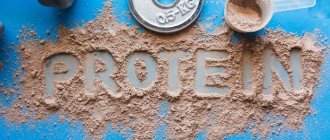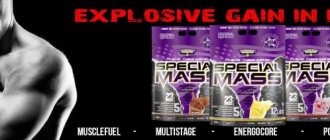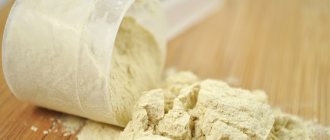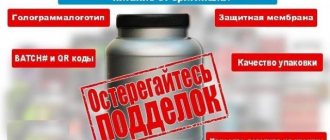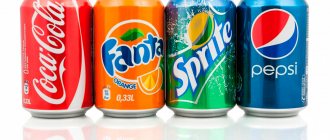Nitrogen donors can be classified as those sports supplements that are used quite rarely in training and competitive practice. If the same protein, creatine or gainer are very popular and are used by literally all athletes, then nitric oxide donors are used mainly by experienced athletes and only in specific training conditions. In addition, this class of sports supplements does not have the best reputation, which is partly justified. Why only partly? Because the composition of a typical supplement is formed on the basis of components to which each body reacts differently, which means that for some this supplement will be effective, but for others it will not have any effect.
Introduction
Nitrogen donors are a class of sports supplements that are used primarily in bodybuilding, as well as in other strength sports to temporarily increase strength. The purpose of using nitric oxide donors is to provide the body with an excess amount of “NO” (Nitric Oxide). Below we will analyze in detail why this is needed, but for now, all you need to know in general about this class of sports supplements is that their basis is formed mainly from components of mineral and plant origin. On the one hand, this is an indicator of the safety of the additive, on the other hand, it is also the reason for the lack of guarantees of its performance. Now let's try to sort the information into pieces.
What it is
The formation of nitrogen monoxide occurs as a result of oxidation by the oxygen atom of L-arginine. Nitric oxide sports supplements are based on one of several amino acids. Basically, it is arginine or citrulline. Nitric oxide is widely used in medicine. It has a positive effect on:
- Central and peripheral nervous system. Nitric oxide activates the process of releasing neurotransmitters from nerve endings. Regulates the growth of cells of the central nervous system. Able to protect neurons, reducing their loss.
- Participates in long-term memory processes.
- Cardiovascular system – controls blood pressure and normalizes blood flow. Also prevents the formation of blood clots. Reduces the rate of development of atherosclerosis.
- Produces energy metabolism enzymes.
- Plays an important role in regulating lung functions.
- High concentrations of nitric oxide can have cytotoxic, antibacterial, antiviral, and antifungal effects.
Description of nitrogen donors
Product: Nitric Oxide Donator
Description: a sports supplement based on components of organic origin, which in its release form and composition differs only in the speed of absorption and the degree of impact.
Purpose: nitrogen donors are used to increase the volume of circulating blood in the muscles. As a result, strength, endurance and energy reserves temporarily increase.
Components: the supplement is based on components of plant, vitamin, and mineral origin, which are used in different combinations in different supplements.
Application: nitric oxide donors are most often used by athletes in such strength sports as crossfit, bodybuilding, powerlifting, armlifting, extreme strength and more.
Contraindications: first of all, this class of sports supplements is contraindicated for people with problems with the cardiovascular, digestive and respiratory systems.
Side effects of nitrogen donors: most often there is a decrease in blood pressure, which entails the development of fatigue, lethargy, drowsiness and sometimes headache.
Overdose of a nitrogen donor: the most common consequence of an overdose is increased excitability, deterioration of immunity, and a drop in strength indicators.
Release form of nitrogen donors: most often, this class of sports supplements is available in the form of powder, tablets and capsules. Less common are liquid forms in the form of “shots”.
Types of nitrogen donors: there is an unspoken division of supplements into sports nitrogen donors and pharmacy nitrogen donors. Both the first and second are available for open sale.
Manufacturing method: the basis of 90% of nitrogen donors is arginine, which is obtained by fermentation from whey protein, as well as crushed plant extracts.
Shelf life: subject to the conditions recommended by the manufacturer, powdered additives can be stored for about 2 years. Liquid forms of the supplement are stored for no more than 1 year.
Operating principle of nitrogen donors
To begin with, let's figure out what kind of substance this is - nitric oxide, how biologically close it is to our body and why its donors are needed, that is, simply put, donors. So, nitric oxide is a substance that the body is able to produce on its own. This substance is formed on the inner walls of blood vessels and is a derivative of the amino acid arginine, the task of which, among its other properties, is to expand the vascular lumen. The body strictly doses the amount of endogenous arginine, which means that in order to intentionally increase the vascular lumen, you need to additionally take exogenous arginine. But why do you need to increase the capacity of blood vessels at all? Let's figure it out.
Increasing the lumen of blood vessels makes it possible to provide muscles with a large amount of blood per unit of time, and since blood is a carrier of oxygen, as well as many nutrients and components, during training under the influence of a nitric oxide donor, muscle efficiency increases significantly. There is serious laboratory confirmation of this positive effect of the supplement on muscles, and it has been carried out more than once. All studies have confirmed and proven a direct connection between the concentration of nitric oxide in an athlete’s body and the rate of muscle growth. Thus, increasing the concentration of this substance in the body allows you to achieve higher rates of muscle growth. This was the reason for the creation of this class of additives.
Nitric oxide and the immune system
Xtreme Napalm
Over the past two decades, nitric oxide has been recognized as one of the most important elements that influence the immune system. Back in 1985-1990, nitric oxide officially began to be used in immunology , understanding how it works on the immune system. For example, it was precisely determined that microphages (good cells in the body that get rid of toxic cells, bacteria, perform one of the most important protective functions) produce nitric oxide with the help of cytokines .
Recently, the popularity of nitric oxide as a dietary supplement has grown throughout the world. In a recent study, 35 men were given NO and one group received a placebo . After 8 weeks of testing, the following was found: in none of the groups were there significant differences in body weight or percentage of fat. But on the other hand, the group that took nitric oxide supplements noted an increase in strength as a result of bench press (per rep), feeling good and having more energy.
If you find an error, please select a piece of text and press Ctrl+Enter.
Efficiency of nitrogen donors
So, we found out that nitric oxide donors are needed in order to increase vascular capacity, which will allow more oxygen and nutrients to be delivered to the muscles. This in turn will increase the effectiveness and quality of training, and will also reduce the time required for rest and recovery between workouts. It would seem that everything is obvious, but in reality everything is much more complicated. Even though the connection between the concentration of nitric oxide in the body and the rate of muscle mass growth has been repeatedly proven, debate about how seriously this concentration is directly affected by sports supplements continues to this day. And the three most frequently discussed reasons are the reason for constant debate.
Firstly, literally every manufacturer of nitrogen donors tries to embellish the effectiveness of their product as much as possible, which is often an attempt to hide the forest behind the trees, that is, to cover up the quality of the product with aggressive advertising. Secondly, in the case of this class of sports supplements, individual susceptibility plays a very important role, as well as the rate and degree of absorption of the substance, which often ranges from 50 to 100%. Thirdly, in addition to the fact that the effectiveness of the supplement is already difficult to track, the slightest departure from the manufacturer’s recommendations further reduces the likelihood of obtaining the declared effect. Based on the sum of the factors, it turns out that the effectiveness of the supplement is equal to a lottery, depending on your luck.
Negative and positive nitrogen balance in the body
The ratio of nitrogen incoming with protein foods and excreted is called balance. If more protein begins to come in, then more nitrogen is excreted. If a person is healthy, then the amount of nitrogen in and out is the same. This state is called balance or homeostasis. Therefore, if you continuously increase the protein content in the body through nutrition and supplements, then the amount of nitrogen excreted will similarly increase, that is, the balance will remain unchanged. And to tell the truth, in this state you will not lose weight, but you will not be able to gain muscle mass at a rapid pace.
Positive nitrogen balance in the human body is a condition when the amount of nitrogen taken in is higher than the amount taken out. We can talk about high protein synthesis and low protein breakdown. This process is necessary for gaining muscle mass.
If more nitrogen is excreted than is supplied, the balance becomes negative. This phenomenon can be observed during protein starvation or due to the lack of amino acids involved in the synthesis of other amino acids in the body.
Protein breakdown is a continuous process. It is determined by the type of food. If you fast, then less nitrogen will be released, which in turn is negative.
Protein starvation can also develop if its amount is not sufficient for the body's needs. In this state, the level of catabolism in the body will increase, which will lead to loss of muscle mass, even if you consume fats, carbohydrates, vitamins, and minerals in normal quantities. In such a situation, the building material burns out at the expense of the body’s reserves, since new elements of the building material are not supplied with food.
The importance of a negative nitrogen balance in sports is difficult to overestimate. Physical activity will only make the situation worse. It is difficult for children to cope with such a condition. A lack of building material for muscle cells will lead to irreversible consequences.
Composition of nitrogen donors
As we have said many times before, the composition of a typical supplement is based on components of mineral and plant origin. Most often, one serving of a typical nitric oxide donor includes components such as KNO3, folate, beet root extract, and glycine propionyl-levocarnitine mixture. At first glance, the set of components seems rather strange. It is for this purpose that we will now describe each of them in detail. In the meantime, it is worth saying that this is normal practice and the composition of nitrogen donors is a testing ground for manufacturers. This means that often on packages you can find substances such as pine bark extract, grape seed extract, dried stems of hanging ivy and more.
KNO3. The main active component of this substance is the most common beetroot. There is a simple and logical explanation for its presence in the additive. According to scientific research, beetroot extract has been used in medicine for quite some time to lower blood pressure precisely due to its ability to expand the vascular lumen. It has this ability due to the presence of potassium nitrate in its composition, from which the body independently produces nitric oxide. However, even such a positive effect of potassium nitrate on the walls of blood vessels does not have a strong or lasting effect, which means that its presence in itself is not a reason for overestimating the cost of nitric oxide donors.
Folate. Most often, nitrogen donors contain a mixture of folate and folic acid. By the way, manufacturers often draw the attention of consumers to the fact that this is precisely “nitro folate,” as if hinting at its super abilities. However, both folate and folic acid have almost identical effects on the body, which are practically not enhanced by their combined use. One can only guess for what purpose the manufacturer adds the “nitro” prefix. Sometimes the following explanation is found for this: supposedly folates are active participants in the process of producing nitric oxide. At the same time, it is known for certain that additional intake of folate-based substances has no effect at all on the rate of nitric oxide production.
Beet root extract. It has already been mentioned above, but not all of its positive properties were given above. Manufacturers, in addition to including it in the KNO3 base, also add it as a separate component for the reason that it is also an excellent antioxidant (by the way, the same as pine bark extract, grape seed extract and dried stems of hanging ivy, oh than was discussed two paragraphs earlier). To one degree or another, each plant component that the manufacturer experiments with affects the body in one way or another. Some improve potency, others strengthen the immune system, others regulate water-salt metabolism, but characteristically, none of them has any effect on the level of nitric oxide production.
Glycine propionyl-levocarnitine mixture. By the way, this combination of substances is the trump card of most nitrogen donors. In a more understandable formulation, this is a combination of glycine and levocarnitine salts, which are included in the supplement to provide the athlete’s body with energy, as well as to accelerate the processes of fat burning and additional supply of blood to the muscles. By the way, it is important to note here that both of these components do not interact with each other in any way, and therefore do not have a mutually reinforcing effect. Moreover, in this combination, glycine is practically useless, and levocarnitine is present in such a small dosage that its effect on the body is barely noticeable. Thus, even the “trump” component, which manufacturers present as unique, has no effect on the production of nitric oxide.
Medical Internet conferences
In 2001, a group of Saratov authors first proposed the use of millimeter-wave electromagnetic vibrations with frequencies corresponding to the rotational molecular spectra of the most important cellular metabolites (NO, CO, O2, CO2, OH, etc.) [1]. Since the molecular emission and absorption spectra of cellular metabolites are in the short-wave part of the submillimeter (terahertz) range [2], which is located on the scale of electromagnetic waves between the EHF and optical infrared ranges [3], the new direction is called “terahertz therapy” (THT therapy) [4].
It is known that metabolite molecules are the fundamental basis for the functioning of complex biological systems, so the possibility of controlling their reactivity, which can be used to regulate metabolic processes, is of extremely great interest.
To implement new scientific tasks, a panoramic spectrometric measuring complex with a quasi-optical reflectometer operating in the frequency range 118-600 GHz was created at JSC TsNIIIIA (Saratov) [1], since it is this range that includes the resonant absorption and emission spectra of the molecules of the above-mentioned cellular metabolites [2], including the molecular spectrum of emission and absorption of nitric oxide (150.176...150.644 GHz).
The molecular emission and absorption spectrum of nitric oxide (NO) attracted the attention of researchers first of all, since for more than 20 years the problem of nitric oxide has been one of the key ones in modern biology and medicine.
In 1987, the reaction of NO formation inside the cells of a macroorganism was discovered [5], after which methods for accelerating and slowing down this reaction, the interaction of NO with the nervous, endocrine and immune systems of the body, and the cytotoxicity of NO towards the macroorganism and microbes began to be intensively studied. The discovery of intracellular NO synthesis led to the discovery of a previously unknown regulatory system of the human and mammalian body – the nitric oxide system [5]. A new direction has emerged in biology—NO biology [6], which provides new fundamental information that can be used in medicine. A number of authors believe that the analysis of cyclic transformations of NO will be no less fruitful for physicians and biologists of the 21st century than the study of the tricarboxylic acid cycle in the mid-20th century [7].
In 1998, three American scientists - R. Furchgott, Luis J. Ignarro and F. Murad - were awarded the Nobel Prize in Physiology or Medicine for their discovery of the role of “nitric oxide” as a signaling molecule in the cardiovascular system" [8]. The nitric oxide molecule is called the “molecule of the 20th century” [7]. NO is not only a universal regulator of physiological and metabolic processes in an individual cell and in the body as a whole, but also carries out intercellular interactions, functioning as a signaling molecule in almost all organs and tissues of humans and animals [9-11]. A characteristic feature of NO is its ability to quickly diffuse through the membrane of the cell that synthesized it into the intercellular space and also easily (without the need for receptors) to penetrate target cells, which determines the properties of NO as a neurotransmitter [12, 13]. It was thanks to the study of nitric oxide that a new principle of signal transmission in biological systems was established: NO is formed in some cells, penetrates membranes and regulates the functions of other cells [7]. Endogenous NO is involved in many vital physiological processes. It is a universal modulator of various body functions, such as interneuronal communications, synaptic plasticity, the state of receptors, intracellular signal transmission, and the release of other neurotransmitters [13].
Inside the cell, NO activates some enzymes and inhibits others. The main physiological targets for NO are considered to be soluble guanylate cyclase and ADP-ribbosyltransferase [7, 14]. Activation of soluble guanylate cyclase causes an increase in cGMP, which in turn leads to a decrease in intracellular Ca2+ content [7]. According to many authors, the ability to regulate the intracellular concentration of Ca 2+ ions is one of the most important properties of NO [15].
Endogenous nitric oxide exists and is continuously synthesized in organs, tissues and cells enzymatically with the participation of NO synthases (NOS) - enzymes that use the amino acid L-arginine as the only substrate [6].
Three isoforms of NOS have been studied: endothelial, neuronal and macrophage [1,16]. Endothelial NOS is found in vascular endothelial cells, platelets, myocardium and endocardium. The endothelial mechanism for the formation of NO from L-arginine is activated during blood flow disturbances and under the influence of acetylcholine, bradykinin, histamine and platelet aggregation factor [1, 8, 16]. Neuronal NOS is found in neurocytes of the central nervous system and peripheral plexuses of the autonomic nervous system (ANS). There are nitrergic (nitrinergic) synapses in the CNS and ANS [1, 8]. Their mediator is NO. NO spreads along the efferent nitrergic nerves to the organs of the respiratory system, gastrointestinal tract, genitourinary system, and uterus [5, 16].
Neuronal and endothelial NOS have many common properties; they are combined together and called constitutive NOS [5, 16]. Constitutive NOS is calcium dependent because it requires Ca2+ for its activation. The enzyme synthesizes NO in physiological concentrations necessary to maintain body homeostasis; the steady-state level of NO maintained by constitutive NOS in tissues does not exceed several micromoles [16]. The formation of NO occurs in a discrete mode and in small portions, and only during those periods of time when the calcium concentration in the NO-synthesizing cell increases [5]. The hypothalamus–pituitary–adrenal cortex system does not have any inhibitory effect on constitutive NOS [5]. Constitutive NOS acts as an antagonist of the adrenergic nervous system in the regulation of blood pressure. Congenital or acquired deficiency of constitutive NOS leads to arterial hypertension, and its hyperfunction leads to hypotension.
In addition to constitutive NOS, “inducible” or “calcium-independent” NOS is also distinguished. It is found in macrophages (therefore it is also called “macrophage”), hepatocytes, fibroblasts, smooth muscle cells of blood vessels, the gastrointestinal tract and genitourinary system, muscle cells of the heart and uterus [5, 16-18]. Inducible NOS appears in cells only after their induction by bacterial toxins and certain inflammatory mediators, for example, proinflammatory cytokines [5, 16, 17]. In cells that are at rest, it is not detected. Inducible NOS synthesizes NO continuously, regardless of the calcium content in NO-synthesizing cells and in quantities hundreds of thousands of times higher than the NO concentrations produced by constitutive NOS [16]. Produced by inducible NOS NO is primarily intended to protect the host organism, helps reduce the activity of border inflammatory cells, the death of microorganisms and intracellular parasites, inhibiting platelet aggregation and improving local blood circulation [12].
The hypothalamus–pituitary–adrenal cortex system can prevent the activation of not yet activated inducible NOS, but cannot stop the secretion of NO that began under the influence of already activated inducible NOS [5]. It has been indirectly calculated that the rate of NO synthesis in a macroorganism can change millions of times [5].
Under hypoxic conditions, the stability of NO increases, which enhances its biological effect [7].
NO production can slow down or stop under the influence of ethanol, glucocorticosteroids, and indomethacin [7, 19].
NO is inactivated by blood hemoglobin with the formation of nitrosohemoglobin, which breaks down to methemoglobin [5]. Excess NO can bind when it interacts with superoxide radicals, thiols and metals (especially Fe2+) [20].
Nitric oxide has also been described as having undesirable effects. According to modern concepts, they are caused by the formation of the strongest oxidizing agent - peroxynitrite, which arises in the reaction of NO with the superoxide anion. Peroxynitrite acts as an integral link that unites two systems of active low-molecular agents that arise in cells and tissues - NO and reactive oxygen species [16].
High concentrations of NO have a cytotoxic or cytostatic effect on any cell, without differentiating whether it is a normal host cell, a tumor cell or a macrophage [5, 7]. The half-life of the NO molecule is measured in seconds, so its effect extends only to nearby cells [5]. It has been established that a chronic excess of NO in the body leads to autoimmune diseases [5].
It has been indirectly calculated that the rate of NO synthesis in a macroorganism can vary millions of times. Sharp hyperproduction of NO is a frequent accompaniment of severe acute therapeutic, surgical and infectious diseases [5]. At the same time, NO itself, excessively accumulating in the cell, can cause DNA damage and have a pro-inflammatory effect in endotoxemia, septic shock, and inflammatory lung diseases [12].
It should be especially emphasized that nowadays people are increasingly talking about the multifunctionality of the action of NO, which sometimes has the opposite character. Thus, it became known that NO can both enhance lipid peroxidation processes in cell membranes and inhibit them, cause both vasodilation and vasoconstriction, induce apoptotic cell death and have a protective effect against apoptosis induced by other agents [7, 21] . NO is characterized by both anticarcinogenic activity and mutagenic action [19].
The conditions under which the protective effect of NO becomes damaging are not clear enough. The multiple effects of NO can be explained by the presence of a large number of metabolic products in the nitric oxide cycle (NO2-, NO3-, NO+, NO-, NO2.-radical, etc.), which have different biological effects [7].
It is believed that the different effects of NO are determined by a variety of NO signaling pathways (which depend on the relative rate of NO formation, redox reactions, as well as combinations of oxygen, superoxide radical and other biological molecules) and the sensitivity of cellular systems to one or another signaling pathway [21 ]. The final effect of NO in blood vessels may depend on the site of its generation, local concentration, and interaction with other tissue components [20].
The biological effects of NO are of particular interest to cardiologists, since NO is a neurotransmitter, a powerful factor of hemostasis, an antiplatelet agent, an endogenous vasodilator [14, 16, 22-27], has a stress-limiting effect [28], and is directly involved in the mechanisms of modulation of the immune response [ 18], is a universal regulator of the central and peripheral nervous systems [7, 13]. Nitrinergic synapses have been described in the central nervous system and the autonomic nervous system, as well as nitrinergic nerves in the heart, gastrointestinal tract, respiratory tract and genitourinary system [5, 12], which suggests the existence of a third (along with choline and noradrenergic) type of nervous system [12] .
Nitric oxide, produced in the brain, is one of the most important levers by which the nervous system controls vascular tone, and several mechanisms of such regulation have been described - through direct stimulation of vasopressin release or by modulating the relationship in the hypothalamus-epiphysis-adrenal system [7].
However, the main mechanism of the vasodilatory effect of NO is directly related to the functioning of guanylate cyclase, and only its soluble form, and is mediated through the activation of soluble guanylate cyclase with the accumulation of cyclic 3', 5'-guanosine monophosphate (cGMP), which subsequently leads to the release of Ca2+ from muscle cells and into ultimately – to vasodilation [17]. It has been proven that NO is involved in the relaxation of vascular smooth muscles [7, 29, 30-34].
Moreover, it has been established that many physiological vasodilators exert their vasodilatory effect precisely through the activation of NO synthesis. The therapeutic effect of the most well-known nitrovasodilators - nitroglycerin, nitrosorbide, sodium nitroprusside, etc. - is also associated with the interaction of NO, formed as a result of their biotransformation, with the heme of guanylate cyclase, activation of the enzyme and accumulation of cGMP.
The known property of nitric oxide to inhibit platelet aggregation is also associated with its ability to activate soluble guanylate cyclase [14, 29, 35, 36]. Guanylate cyclase regulates aggregation through a feedback mechanism: initiation of aggregation promotes activation of the enzyme, and accumulating cGMP mediates a signal for disaggregation and inhibits aggregation through the general mechanism of inhibition of Ca2+ accumulation. Thus, guanylate cyclase can be considered as a protective mechanism against the development of aggregation. In this regard, targeted activation of guanylate cyclase by nitric oxide and NO-generating compounds can be used to attenuate the increased ability of platelets to aggregate. And since the regulatory role of guanylate cyclase manifests itself at the very early stages of the aggregation process, new enzyme activators will be able not only to weaken hyperaggregation, but also to prevent their spontaneous aggregation, and therefore, prevent the occurrence and development of vascular complications.
The cytoprotective effect of NO is due to its ability to prevent not only aggregation, but also platelet adhesion [16, 19].
It is known that nitric oxide helps normalize the functional state of the cell wall, as well as the coagulation potential of the blood and microcirculation [17, 34, 37].
In addition, under the influence of nitric oxide, there is a decrease in the aggregation ability of erythrocytes both in vitro and in vivo [38], a change in the geometry of blood vessels due to their dilatation [23, 27, 39], that is, endogenous nitric oxide largely determines the rheological properties blood, which primarily depend on the qualitative and quantitative composition of red blood cells.
Of great importance is the discovered anti-stress effect of NO, which is associated with its activation of stress-limiting mechanisms [28]. It is known that this reduces the content of fibrinogen in the blood, which affects both platelet aggregation and the rheological properties of blood [40-42].
With prolonged stress exposure, a decrease in the production of endogenous nitric oxide and a decrease in its regulatory functions occur [28].
It has been established that nitric oxide takes part in the regulation of lipid peroxidation: in physiological concentrations, NO acts as an antioxidant that inhibits the development of radical oxidative reactions by binding to free Fe2+ ions and heme ions and inhibiting the decomposition of peroxides [7].
Thus, the nitric oxide regulatory system influences the main pathogenetic mechanisms of the development of cardiovascular pathology: platelet hemostasis, hemocoagulation, rheological properties of blood, the functional state of the endothelial and smooth muscle components of the vascular wall, stress-limiting factors, lipid peroxidation.
Diseases of the cardiovascular system can develop both as a result of a decrease and as a result of an uncontrolled increase in the concentration of NO in the body.
A decrease in NO secretion leads to the development of arterial hypertension and pathology of the coronary vessels. Thus, the results of experiments on experimental animals revealed the existence of a causal relationship between a decrease in NO secretion and the occurrence of arterial hypertension [43, 44].
The mechanism of this action is explained, firstly, by the fact that NO is (along with prostacyclin, etc.) an activator of guanylate cyclase [17] and causes relaxation of vascular smooth muscles. Secondly, NO has blood pressure and central depressive effects, probably through its effect on the paraventricular nuclei of the hypothalamus and the nucleus of the solitary tract [17, 45]. It has been established that increased concentrations of endogenous NOS blockers are one of the causes of renal hypertension [46].
Studies with NO donors and inhibitors have shown that their intracoronary administration has a direct effect on the tone of the coronary arteries in patients with atherosclerosis or hypercholesterolemia. Thus, in patients with atherosclerosis of the coronary arteries, intracoronary infusion of the NO inhibitor acetylcholine leads to a paradoxical reaction - a decrease in the diameter of the subendocardial arteries, while in healthy people a similar procedure causes their increase [47]. Experiments with the NO donor L-arginine showed that its intracoronary administration in patients with hypercholesterolemia significantly increased coronary blood flow, which confirms the role of NO in the regulation of coronary tone [48]. It was noted that dysfunction of the vascular endothelium appears to manifest itself long before the development of clinically significant atherosclerosis [48].
Due to its vasodilatory properties and ability to inhibit the generation of O2-phagocytic cells, NO plays a key protective role in ischemic myocardial damage [7].
It is also known that nitric oxide, released in the sinoatrial node, is required to participate in the autonomic control of the heartbeat [7]. NO may also be involved in vascular remodeling processes [20].
The role of NO in the regulation of vascular tone of the lungs under hypoxic conditions has been proven: acute blockade of NO synthesis led to increased hypoxic vasoconstriction [12]. Insufficient formation and release of NO is the predominant mechanism for the development of pulmonary hypertension and the loss of the ability of pulmonary vessels to respond by vasodilation to endothelium-dependent substances during chronic hypoxia [12]. In many cases, NO inhalation eliminates pulmonary vasoconstriction associated with hypoxia, primary pulmonary hypertension, cardiac defects, and adult respiratory distress syndrome [12].
An increase in NO concentration is one of the pathogenetic links of various types of shocks [5]. It has been proven that a progressive decrease in blood pressure in cases of prolonged infectious-toxic shock is due to increased secretion of nitric oxide as a result of the expression of inducible NOS under the influence of inflammatory stimuli [20, 49]. In this case, there is refractoriness even to large doses of vasoconstrictors, but it has been proven that immediately after intravenous administration of NO inhibitors, blood pressure in such patients increases [49]. A similar situation is observed in hemorrhagic shock [50].
The concentration of NO in the blood increases not only in shock, but also in many other diseases [11, 51]. Most of them are characterized by a tendency to hypotension and a decrease in the reserve of contractile function of the heart.
The negative inotropic effect of proinflammatory cytokines on isolated papillary muscle is mediated by NO, which is an effective cytokine molecule [52]. The development of circulatory failure during systemic inflammatory reactions is also associated with hyperproduction of NO in blood vessels under the influence of inflammatory stimuli [20].
Inducible NOS was found in cardiomyocytes of patients with dilated cardiomyopathy, which is not found in healthy cardiomyocytes [53]. Experimental studies revealed a negative chronotropic effect of NO on the myocardium [54]. An increased level of NO in the blood is apparently one of the causes of impaired contractile function of the heart in dilated cardiomyopathy, myocarditis and myocardial infarction [55, 56].
It is known that local vascular reactions caused by atherosclerosis and endothelial destruction also lead to hyperproduction of nitric oxide as a result of the expression of inducible NOS [20].
The presented data indicate that both deficiency and excess of nitric oxide contribute to the emergence of a wide variety of pathologies of the cardiovascular system.
A decrease in NO secretion leads to the development of arterial hypertension, pathology of the coronary vessels, progression of prethrombotic and thrombotic conditions, impaired microcirculation, and increased hypoxic vasoconstriction of the pulmonary vessels. Nitric oxide plays a key protective role in ischemic myocardial damage, takes part in the pathogenesis of ischemic cerebral infarction, vascular remodeling processes, activation of stress-limiting factors, and in the mechanisms of modulation of the immune response.
An excessive increase in the concentration of NO in the blood leads to hypotension and a decrease in the reserve of contractile function of the heart, and is one of the pathogenetic links of various types of shocks.
Thus, for cardiologists, the issues of maintaining the physiological level of concentration and functional state of endogenous NO in the human body seem extremely relevant both scientifically and practically.
Of particular importance is the fact that the efficiency of the nitric oxide cycle increases sharply under functional loads associated with increased oxygen utilization, during cerebral and myocardial ischemia, and during numerous pathological processes occurring under hypoxic conditions. Only in cases where the use of oxygen is fully compensated by its supply can the role of the nitric oxide cycle remain the same as it performs under normal physiological conditions [57]. Consequently, the role of the nitric oxide cycle increases sharply in diseases such as coronary heart and brain disease, arterial hypertension, congenital and acquired heart defects, and myocardial dystrophy.
Currently, intensive searches are underway for methods to create pharmacological activators of guanylate cyclase based on chemical structures (donors) that provide the possibility of the formation of endogenous nitric oxide in the body, regulation of its concentration and reactivity [6, 14].
Unfortunately, drugs based on the described compounds have not yet been introduced into clinical practice. In addition, pharmacological correction of NO levels may be accompanied by undesirable side effects, since there are currently no available clinical methods for determining the concentration of nitric oxide in the bloodstream.
In connection with the above, it is of interest to use electromagnetic radiation in the millimeter range (EMR MW) or radiation in the extremely high frequency range (EHF radiation), which includes electromagnetic oscillations with a frequency from 3 ´ 1010 to 3 ´ 1011 Hz, as a potential regulator of the nitric oxide cycle. which corresponds to wavelengths from 1 to 10 mm [59]. One of the main properties of EMR MMD is the dependence of the results of exposure to EMR MMD on the phase of biological development and on the initial state of the object: EMR MMD has practically no effect on the normal functioning of a healthy organism [59, 60, 61], and if pathology occurs, it can regulate its functioning within limits inherent in a given biological species [62].
According to a number of modern authors, irradiation with terahertz EMR at frequencies of the molecular spectrum of nitric oxide (THN-NO EMR) can not only increase the synthesis of endogenous nitric oxide and increase its reactivity, but also increase the duration of existence of nitric oxide in cells [63].
Currently, a positive effect of EMR THC-NO on the functional properties of platelets and rheological parameters during irradiation of the blood of patients with angina pectoris in vitro has been revealed [64, 65], as well as the restoration of initially impaired rheological parameters and functional activity of platelets when irradiated with EMR THF-NO whites rats under immobilization stress [66].
Since 2004, after studying the effect of EMR at the frequencies of the molecular spectrum of nitric oxide in healthy volunteers, at the Department of FPC and PPS Therapy of Saratov Medical University, studies were first started to study the effect of TCG-NO therapy in cardiac patients [67]. The first results confirmed the supposed vasoactive, antianginal and hypocoagulative effects of THC-NO radiation [67], which allows us to consider THC-NO EMR as a new promising direction in the treatment of cardiovascular pathology, requiring serious study.
It was subsequently found that THC-NO therapy enhances the antianginal and hypotensive effects of drug treatment in patients with both stable and unstable angina, improves long-term treatment results for these categories of patients, and has a beneficial effect on the rheological properties of blood, which is extremely important for process optimization microcirculation, and also has a pronounced positive effect on the course of chronic DIC in patients with stable angina of high functional classes [68, 69].
At the same time, when studying the effect of EMR THC-NO in middle-aged and elderly patients with angina pectoris, results were obtained that indicate relatively independent dynamics of hemocoagulation potential indicators and the antianginal effect of THC therapy-NO [70]. Relief of angina attacks occurred equally in middle-aged and elderly patients, while changes in parameters of the thrombogenic potential of the blood varied significantly.
In middle-aged patients, the improvement in hemocoagulation parameters occurred due to an increase in the activity of the natural antithrombin-III anticoagulant until its complete normalization, while no effect on the procoagulant potential was noted. In the group of elderly patients, on the contrary, the effect of THC-NO therapy was realized through the positive dynamics of the level of natural procoagulants, and the effect was carried out on both the initial and final stages of blood coagulation, which was manifested in a decrease in the level of fibrinogen in combination with an extension of the AVR. At the same time, there was no dynamics of antithrombin-III activity [70]
Recent studies have established that the effectiveness of TCG-NO therapy depends on the severity of the initial condition of patients with angina pectoris III-IV. [71]
In patients with initially less frequent angina attacks (1-3 per day), in almost 90% (89.5%) it is possible to achieve complete disappearance of angina attacks by the time of discharge from the hospital. At the same time, the maximum antianginal effect of EMR THC-NO was revealed at the end of the course of treatment - at the 7th session.
In patients with angina pectoris III-IV f.k. with more frequent attacks (more than 3 per day), complete relief of angina attacks was achieved only in 51.4% of cases, which is significantly lower than in patients with milder angina, but the maximum antianginal effect was achieved earlier, by the 6th session [71]
Thus, in more severely ill patients, it is probably advisable to limit oneself to a shortened course of THC-NO therapy. The information obtained corresponds to one of the main provisions about the interaction of millimeter waves with living objects: with a more severe initial state, a less active effect is required to normalize homeostasis [59-62].
It is extremely interesting that the effect of THC-NO EMR on the parameters of hemocoagulation and blood rheology is fundamentally different in the two examined groups: with less frequent attacks of angina, only a decrease in the procoagulant potential was revealed, while in the group with more frequent painful attacks the activity of the anticoagulant increases and is restored. link, and also increases the deformability of erythrocytes [71]. It is not yet possible to explain the mechanism of such differences, taking into account the available information.
However, these results may be associated with the activation of various components of the nitric oxide cycle in certain groups of patients with angina, since it is known that the numerous, often opposite effects of nitric oxide are associated with a variety of NO signaling pathways (which depend on the relative rate of NO formation, redox reactions, as well as combinations of oxygen, superoxide radical and other biological molecules) and the sensitivity of cellular systems to one or another signaling pathway [12]. The final effect of NO may depend on the site of its generation, local concentration and interaction with other tissue components [11].
The results obtained indicate that THC-NO EMR is a promising method that influences the pathogenetic mechanisms of the development of cardiovascular pathology (thrombogenic potential, hemorheological parameters), increasing the antianginal and antihypertensive effects of medications.
At the same time, the identified differences in the effects of THC-NO therapy in individual groups of patients with angina pectoris require further research to develop an individual approach when using terahertz waves in clinical practice.
The best nitrogen donors
As for the rating of the best nitric oxide donors, the statistics here may be partly not entirely objective, since the degree of impact of each individual supplement on each individual person is very different. In this regard, it is best to use the following rule as a recommendation. The best nitrogen donor is the one that works for you. And in order to find the one that will work best, you need to try each one, compare and make a choice. Here it is worth warning you that you should not expect explosive power, comprehensive pumping, hellish endurance or other effects beyond those declared by the manufacturer. To make a choice, all you need to do is feel that your workout with a specific supplement is more vigorous.
- Nano Vapor from MuscleTech
- SuperPump 250 from Gaspari
- V-12 Magnum from SAN
- NO Xplode from BSN
- NIOX from Nutrex
Nitrogen donors in the pharmacy
As we already said at the beginning of the article, nitric oxide donors are usually divided into sports and pharmacy. We have already described sports nitrogen donors above. Their composition, regardless of the manufacturer, is often either identical to similar additives or consists of 85% of the same components. The remaining 15% comes from the same plant extracts, tinctures and squeezes that manufacturers like to experiment with the most. Sports nitrogen donors can be purchased at any sports nutrition store, naturally without a prescription. Now, let’s move on to pharmaceutical drugs, which are also sold everywhere (in any pharmacy), but for the purchase of which, due to their strong effects, you may sometimes need a doctor’s prescription.
- Nitroglycerine. Pharmacological drug. It has the ability to easily penetrate the membrane into cells. For medical purposes it is used to relieve attacks of angina pectoris. It is taken orally and has an effect literally 1-2 minutes after consumption. The expansion of the vascular lumen stimulates an increase in the volume of circulating blood in the muscles, which makes it possible to train longer, harder and more intensely.
- Nitrosorbide. Pharmacological drug. It is equivalent to nitroglycerin, as it has a similar pharmacological effect and has the same effect when taken. In fact, it is used for medical purposes for the same purposes. The only difference from nitroglycerin is that nitrosorbide does not have an effect immediately, but 30-40 minutes after taking it. Therefore, nitroglycerin is a “short” nitrogen donor, and nitrosorbide is a “long” one.

